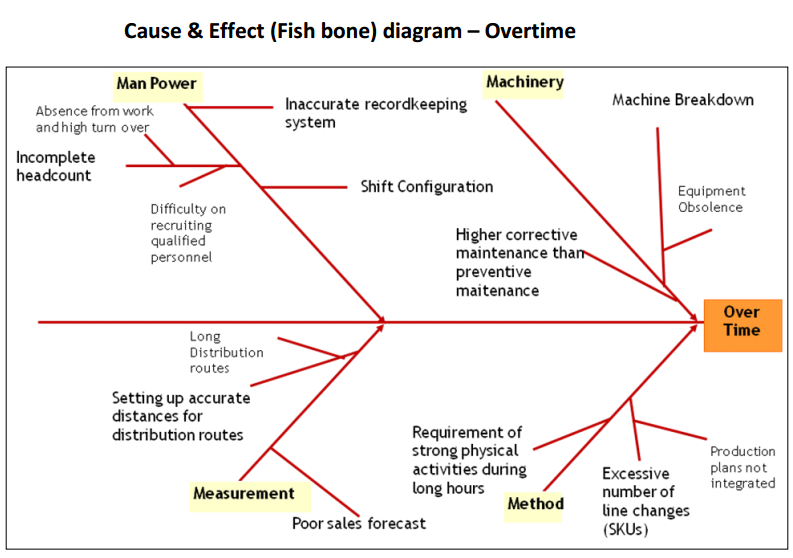The Risks of Excessive Overtime
On the surface, you might think of overtime as helpful to your workers and your company. After all, it provides flexibility so you can adapt to day-to-day changes in workload, product or service demands. It also helps you handle unexpected absences without the need to hire more staff. For your employees, it allows them to make more money.
However, excessive reliance on and use of overtime comes with big risks. Global workforce performance and safety management firm Circadian identified five major risks of excessive overtime.

1. Increased Health Problems
This includes everything from back injuries from heavy lifting to increased blood pressure, alcohol abuse, and increased risk of suicide. Cornell University has found that as overtime goes up, the rates of both severe work-family conflicts and divorce also increase.
2. Increased Safety Risks
Long hours increase safety risks from worker fatigue and less focus, whether those hours are worked over the course of one day or several weeks. Of course, the risks of worker fatigue are not limited to the workplace. Tired employees are also more likely to have more personal safety issues such as car accidents travelng to and from work.
3. Decreased Productivity
In their research, Circadian discovered that productivity and performance in white-collar jobs decreases as much as 25% when workers work 60 or more hours a week. This decrease in productivity ripples through everything, resulting in late projects, a failure to finish tasks altogether, and a reduction in the quality of their work product. A study from Le Moyne College in Syracuse, New York, measuring productivity in terms of worker output per hour, found that just a 10% increase in overtime can result in a 2.4% decrease in productivity.
4. Increased Absenteeism
Increased absenteeism is the largest risk of excessive overtime, and can become a self-perpetuating problem. Excessive overtime leads to employee fatigue, poor health, and work-family tensions, all of which can require employees to take more time off work. The other employees forced to cover these absent workers often do so by working overtime themselves, and the cycle begins all over again.
5. Increased Turnover Rates
Employee turnover rates have been found to result directly from increased health risks, family-work tensions, and general employee fatigue. Like absenteeism, higher turnover rates can be self-perpetuating. Remaining employees cover for workers who have quit or been terminated by working more overtime.

Coca Cola Leader in Fighting Excessive Overtime
In a thorough study of their own overtime practices, leading global firm The Coco-Cola Company identified all of the above risks, plus several more that they found equally concerning:
- Reduced employee engagement
- Extra cost incurred by paying premium overtime wages
- Increased benefits costs associated with worker illness or injury
- Risks to product integrity and quality
- Legal and reputational risk.

Coke Case Study: How to Manage Overtime Risk
So how can you manage the risks of excessive overtime? Coca-Cola took an inventory of their work and overtime policies and came up with ways to decrease excessive overtime. The company came up with three main areas to focus on:
1. People
Problem: Overtime Best Practices Not Well Understood.
Strategy: Properly educate and communicate with employees/unions.
Potential Tactics:
- Ensure work hour requirements are part of employee contracts and handbooks.
- Promote as an improved and healthy work-life balance.
- Share overtime findings with employees and explain relevant laws and goals to increase understanding of necessary changes.
2. Process
Problem: Process Does not Support Overtime Best Practices.
Strategy: Assess timekeeping methods and reconciliation.
Potential Tactics:
- Ensure time records reflect actual work hours (i.e. workers should not be required to stay for a staff or production meeting after clocking out, nor should they clock in prior to start time if they are not working during that time).
- Ensure timekeeping clearly identifies regular and OT hours.
- Replace master time tracking methods with specific time tracking.
- Reconcile any differences with employee sign off.
- Incorporate formalized supervisor OT approval in advance.
3. Technology
Problems: Supervisors have poor visibility of time keeping data.
Strategy: Ensure time keeping systems provide suitable reporting.
Potential Tactics:
- Track hours to plan and analyze variances.
- When recording time use reason codes to track related impacts/causes such as unplanned stoppages, change-overs, absenteeism, accident rates, quality (i.e., defects/losses), etc.
- Identify and ensure commissioned employees are working within time requirements.
Additional problems and strategies for analyzing overtime policies can be found in the full Coco-Cola report.

Coca Cola's Outstanding Results
Coco-Cola identified problems and strategies while auditing their own overtime policies in the plants of several countries with more than 34,000 employees. In one country, Coco-Cola reduced total overtime hours with these changes:
- 55% hired more full time staff
- 36% hired subcontracted workforce/outsource
- 64% improved their production planning systems
- 54% improved their distribution routes.
These changes had the following results across all country groups studied:
- 73% reported financial saving (cost avoidance to pay overtime premiums)
- 36% reported improved quality
- 55% reported improved Occupational & Safety performance with fewer injuries
- 18% reported reduction on employee turn over
- 55% reported reduction on audit fees and/or fines, claims from Labor Ministry
- 63% reported increased productivity
- 45% reported employee engagement, mainly driven by the income reduction.
In short, with the money saved in overtime premiums, these plants were able to hire more full time staff, increase employee salaries, provide employees with needed additional training. All of this led to quality and productivity increases, a reduction in losses from overwork, and financial savings for the company overall.
What Coca Cola found is that every part of how work gets done is interrelated. When one part of the system goes wrong, other areas suffer.
Excessive overtime, it turns out, is one of the clearest warning signals of deeper problems within your company. Management processes and tracking systems that integrate everything together and give you a complete picture of your business will allow you to optimize and improve.
Pacific Timesheet offers comprehensive time and attendance and absence management tools to make it easier to track and avoid excessive overtime.
What methods have you found most effective in avoiding excessive overtime?
Image Sources: Flickr 1,




